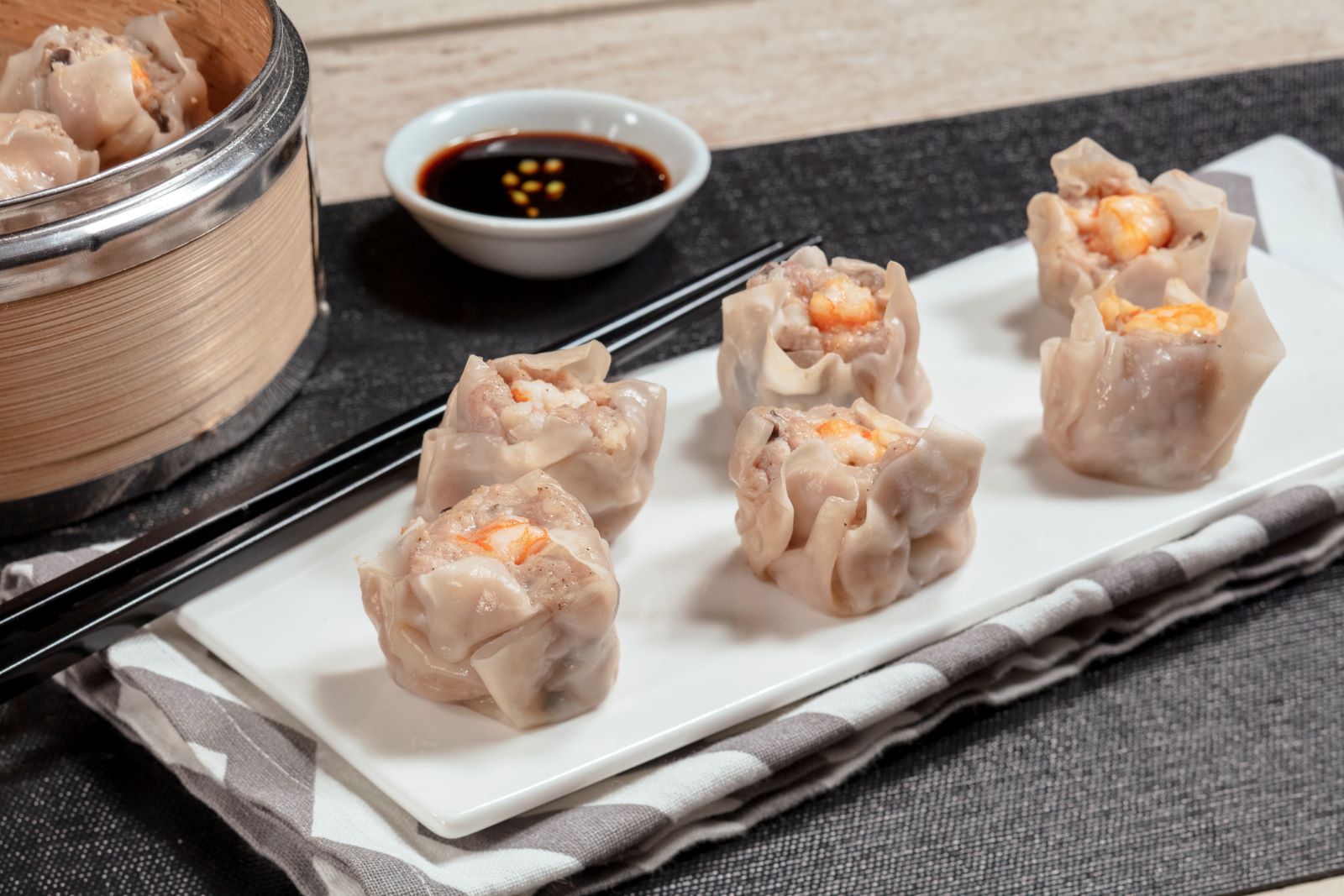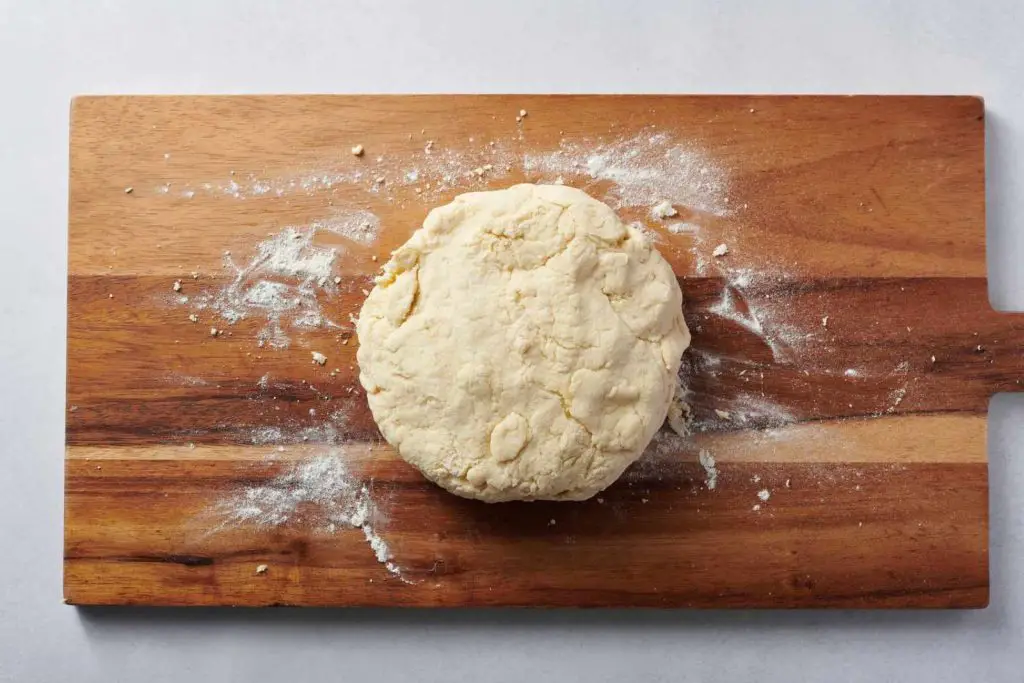
Siomai, a popular Chinese dumpling delicacy, has captured the hearts and taste buds of food enthusiasts worldwide. These bite-sized bundles of savory goodness are traditionally filled with a combination of ground meat, shrimp, and various seasonings, all wrapped in a thin wrapper. Whether you enjoy them steamed, fried, or in soup, siomai makes for a satisfying and flavorful snack or meal. If you find yourself with a surplus of siomai or want to prepare them in advance for quick and convenient meals, freezing is an excellent preservation method. By freezing siomai, you can ensure their freshness, extend their shelf life, and have a delicious and convenient treat readily available whenever you crave those delectable dumplings. In this guide, we’ll explore the best techniques for freezing siomai to maintain their taste, texture, and overall quality. Join us as we embark on a culinary journey to preserve the flavors of siomai and unlock the convenience of having them at your fingertips whenever the craving strikes.
Here are the simple steps to freeze siomai:
Step 1: Select Fresh Siomai
Choosing fresh and high-quality siomai is crucial to ensure that your frozen siomai will retain their taste and texture when thawed and cooked. Here’s why this step is important:
- Retaining flavor: Fresh siomai will have a more vibrant and delicious flavor compared to siomai that has been stored for a long time or is past its prime. By selecting fresh siomai, you can ensure that the flavors of the meat filling and seasonings are at their best.
- Maintaining texture: Fresh siomai typically has a firm and succulent texture. The wrappers are less likely to be soggy or dried out, and the meat filling will be juicy and tender. Choosing fresh siomai ensures that the texture remains pleasing even after freezing and thawing.
- Avoiding spoilage: Siomai that is not fresh or of poor quality may already be nearing its expiration date or have been stored improperly, increasing the risk of spoilage. By selecting fresh siomai, you minimize the chances of freezing siomai that are already spoiled or nearing spoilage.
- Intact wrappers: Check the siomai wrappers to ensure they are intact and in good condition. Cracked or torn wrappers can lead to siomai falling apart during freezing or cooking. Fresh siomai with intact wrappers will hold their shape better when frozen and maintain their appearance when cooked.
To select fresh siomai, consider the following tips:
- Purchase from reputable sources: Buy siomai from trusted suppliers or stores known for their quality ingredients. This reduces the risk of buying siomai that has been stored improperly or for an extended period.
- Check the appearance: Inspect the siomai visually. Look for plump and well-formed siomai with no signs of discoloration or browning. The wrappers should be smooth and free from any tears or damages.
- Smell test: Give the siomai a sniff to check for any off-putting odors. Fresh siomai should have a pleasant aroma, indicating that the ingredients are fresh and the siomai is in good condition.
- Ask about the preparation: If purchasing from a siomai stall or restaurant, inquire about the preparation and storage practices. Ensure that the siomai are made and handled hygienically.
Step 2: Arrange the Siomai on a Tray
After selecting fresh siomai, the next step is to arrange them on a tray or baking sheet. This step is essential to ensure that the siomai freeze individually without sticking together. Here’s why this step is important:
- Prevent sticking: Siomai, especially when frozen, can easily stick together if they come into contact with each other. By arranging them on a tray with some space between each siomai, you create a barrier that prevents them from sticking together during the freezing process.
- Maintain shape and appearance: Siomai that stick together during freezing can become misshapen and lose their attractive appearance. By laying them out individually, you preserve the shape and presentation of each siomai, ensuring they look appetizing even after freezing.
- Easy portioning: When siomai are frozen individually on a tray, it becomes easier to portion them out later. You can remove the desired number of siomai without having to thaw the entire batch, allowing for convenient and flexible usage.
To arrange the siomai on a tray, follow these steps:
- Line the tray: Use a tray or baking sheet lined with parchment paper. The parchment paper prevents the siomai from sticking to the tray and makes it easier to remove them later.
- Leave space between siomai: Place the siomai on the tray, making sure to leave some space between each piece. The exact spacing may depend on the size of your siomai, but typically 1 inch (2.5 cm) is sufficient. This space prevents the siomai from touching and sticking together during freezing.
- Arrange in a single layer: If you have a large number of siomai, it’s best to arrange them in a single layer on the tray. If necessary, use multiple trays to accommodate all the siomai without overcrowding them.
Step 3: Pre-Freeze the Siomai
Pre-freezing the siomai before final packaging and long-term storage is an important step to maintain their individual shape and prevent them from sticking together. Here’s why this step is essential:
- Preserve shape: Siomai, when packed and frozen immediately, have a higher chance of sticking together and losing their distinct shape. Pre-freezing them on a tray before packaging allows each siomai to solidify individually. This ensures that they maintain their shape and appearance throughout the freezing process.
- Prevent clumping: Pre-freezing the siomai helps create a thin layer of ice around each piece, acting as a barrier between them. This ice layer prevents the siomai from sticking together during storage, making it easier to separate and use only the desired amount later on.
- Enhance convenience: By pre-freezing the siomai individually on a tray, you enable easier portioning and retrieval in the future. You can remove as many siomai as needed without having to thaw the entire batch, reducing waste and allowing for greater flexibility in meal preparation.
To pre-freeze the siomai, follow these steps:
- Place the tray in the freezer: Carefully transfer the tray of arranged siomai to the freezer, ensuring it sits on a flat surface.
- Set the pre-freezing time: Let the siomai pre-freeze in the freezer for about 1 to 2 hours. The exact time may vary based on the thickness and size of the siomai. The goal is to partially freeze them, creating a solid outer layer while keeping the inside slightly soft.
- Check for pre-freezing completion: After the recommended pre-freezing time, check the siomai to see if they have solidified and can hold their shape when touched. The outer layer should feel firm, but the inside should still have some give.
Step 4: Pack the Siomai
After pre-freezing the siomai, the next step is to package them properly for long-term storage. This step involves transferring the partially frozen siomai into airtight freezer bags or containers. Here’s why this step is important:
- Maintain freshness: Packaging the siomai in airtight containers or freezer bags helps seal in their freshness and flavor. It creates a barrier against air and moisture, reducing the risk of freezer burn and maintaining the quality of the siomai over an extended period.
- Prevent cross-contamination: Proper packaging ensures that the siomai are kept separate from other foods in the freezer, minimizing the risk of cross-contamination and maintaining food safety.
- Portion control: Packing the siomai in small portions that can be consumed in one sitting helps avoid repeatedly thawing and refreezing the entire batch. This allows for better portion control and minimizes food waste.
To package the siomai, follow these steps:
- Prepare airtight containers or freezer bags: Ensure you have clean and airtight containers or freezer bags ready for packaging the siomai. Choose containers that are suitable for freezing and can adequately protect the siomai from air and moisture.
- Transfer the siomai: Carefully remove the pre-frozen siomai from the tray, ensuring they remain intact. Place them in the airtight containers or freezer bags. If using freezer bags, squeeze out any excess air before sealing them tightly to minimize the risk of freezer burn.
- Portion control: Consider dividing the siomai into small portions that you can easily consume in one sitting. This helps maintain the quality of the remaining siomai since you don’t have to thaw and refreeze the entire batch repeatedly.
- Label the packages: Using a permanent marker, label each package with the contents (siomai) and the date of freezing. This labeling ensures you can easily identify and keep track of the siomai in your freezer, using them within a reasonable timeframe.
Step 5: Remove Excess Air and Seal
After packaging the siomai in airtight freezer bags or containers, the next step is to remove any excess air from the packaging before sealing it tightly. Here’s why this step is important:
- Prevent freezer burn: Freezer burn occurs when moisture in the siomai evaporates and forms ice crystals on the surface due to exposure to air. Removing excess air from the packaging helps minimize the potential for freezer burn, as it reduces the amount of air in contact with the siomai.
- Maintain freshness and quality: By removing excess air, you create a better seal and minimize the risk of air reaching the siomai. This helps maintain their freshness, texture, and flavor for a longer duration in the freezer.
- Optimal storage conditions: Excess air in the packaging can cause temperature fluctuations and affect the overall quality of the siomai. Removing the air ensures a more stable and consistent environment for the siomai, promoting better preservation.
To remove excess air and seal the packaging, follow these steps:
- Freezer bags: If using freezer bags, gently press on the bag containing the siomai to push out any excess air. Start from the bottom of the bag and work your way up, being careful not to crush or damage the siomai. Once the air is removed, seal the bag tightly.
- Containers: For airtight containers, press down on the siomai gently to eliminate any trapped air. Ensure that the container’s lid or cover is secure and properly sealed to prevent air from entering.
- Double-check the seal: After removing excess air, double-check that the freezer bags or containers are tightly sealed to provide optimal protection against air and moisture.
Step 6: Label and Date the Packages
Once the siomai packages are sealed and ready for storage, it is crucial to label them with relevant information. Labeling each package with the contents (siomai), date of freezing, and any additional information helps you keep track of the siomai in your freezer and ensures their optimal usage. Here’s why this step is important:
- Easy identification: By labeling the packages with the contents (siomai), you can easily identify them among other frozen items in your freezer. This saves time and effort when you’re searching for a specific item.
- Freshness tracking: Including the date of freezing allows you to track how long the siomai have been in the freezer. It helps you determine their freshness and ensures you use them within a reasonable time frame, minimizing the risk of consuming siomai that have been stored for too long.
- Organization and inventory management: Proper labeling enables you to maintain an organized freezer and efficiently manage your food inventory. You can plan meals, rotate items, and prevent wastage by utilizing the siomai in a timely manner.
To label the packages, follow these steps:
- Permanent marker: Use a permanent marker to write directly on the packaging material or on labels that can be affixed to the packages.
- Contents: Clearly write “Siomai” or “Frozen Siomai” on each package to indicate the contents.
- Date of freezing: Write the date when the siomai were frozen. Include the month, day, and year for accurate tracking.
- Additional information: If desired, you can add additional information such as the quantity of siomai in the package or any specific seasonings or flavors used. This can be helpful when planning meals or accommodating dietary preferences.
Step 7: Store in the Freezer
After properly labeling the siomai packages, the next step is to store them in the freezer. This step ensures that the siomai remain frozen at the optimal temperature for long-term storage. Here’s why this step is important:
- Maintain quality and safety: Storing the siomai in the freezer at the correct temperature helps preserve their quality, taste, and texture over an extended period. It prevents spoilage, bacterial growth, and freezer burn, ensuring the siomai remain safe for consumption.
- Cold and consistent environment: The coldest part of the freezer, such as the back or the bottom shelf, provides a consistently cold temperature, which is essential for keeping the siomai frozen solid. This helps maintain their shape and prevents any potential thawing and refreezing cycles that could impact their quality.
- Temperature requirements: The ideal freezer temperature for storing siomai is at or below 0°F (-18°C). At this temperature, the siomai remain frozen and safe from spoilage. It also helps maintain the optimal texture and flavor of the siomai when they are eventually thawed and cooked.
To store the siomai in the freezer, follow these steps:
- Find the coldest part: Locate the coldest part of your freezer, typically the back or the bottom shelf. This area experiences fewer temperature fluctuations, ensuring a more stable environment for long-term storage.
- Arrange packages: Place the sealed siomai packages in the chosen area of the freezer, ensuring they are arranged in a way that allows for easy access and visibility.
- Avoid overcrowding: Avoid overcrowding the freezer with other items, as this can obstruct airflow and affect the overall temperature stability. Leave some space around the siomai packages to allow for proper air circulation.
- Check the freezer temperature: It’s crucial to verify that your freezer is set at or below 0°F (-18°C) to maintain the siomai’s quality and safety. Use a freezer thermometer to monitor the temperature periodically.
How long can siomai last in the freezer?
Siomai can typically last in the freezer for up to 2 to 3 months while maintaining good quality. However, it’s important to note that the exact duration may vary depending on the specific ingredients and preparation method. Proper packaging, labeling, and storage at or below 0°F (-18°C) are crucial for maximizing the siomai’s shelf life in the freezer.
Other related questions
How do you defrost siomai?
There are two recommended methods to defrost siomai safely. The first is to transfer the frozen siomai from the freezer to the refrigerator and allow them to thaw overnight. Alternatively, you can use the defrost function on a microwave, ensuring to follow the manufacturer’s instructions and periodically checking the siomai to prevent overheating.
Can you refreeze siomai?
It is generally recommended to avoid refreezing siomai once it has been thawed. Refreezing can compromise the quality, texture, and taste of the siomai, leading to potential food safety concerns. To maintain the best quality and safety, it is advisable to thaw only the amount of siomai you intend to consume and store the remaining portions in the freezer without subjecting them to repeated thawing and refreezing cycles.
How do I know if the siomai has gone bad after being frozen?
To determine if siomai has gone bad after being frozen, there are several signs to look for. Firstly, check for any off odors or foul smells. If the siomai emits a strong unpleasant smell, it is likely spoiled. Secondly, examine the appearance and texture. If the siomai has discolored, developed freezer burn, or has a slimy texture, it is a sign of deterioration. Lastly, taste a small portion. If the siomai tastes off or has a sour flavor, it is an indication that it has spoiled and should not be consumed.
Should I pre-cook siomai before freezing?
Pre-cooking siomai before freezing is not necessary but can be beneficial depending on personal preference. Pre-cooking can help partially cook the siomai, reducing the overall cooking time when you later decide to consume them. However, freezing raw siomai is also a common practice and allows for more flexibility in cooking methods and customization.
What is the best way of reheating the frozen siomai?
The best way to reheat frozen siomai is to steam them. Place the frozen siomai in a steamer basket or on a plate inside a steamer. Steam them for approximately 8-10 minutes until they are thoroughly heated and the wrappers become tender. Avoid reheating siomai in the microwave as it can result in uneven heating and affect the texture of the siomai.








